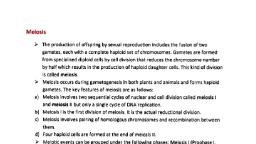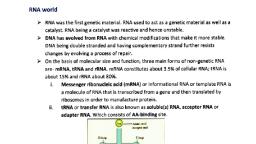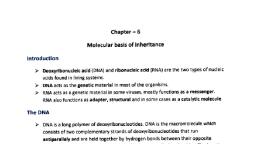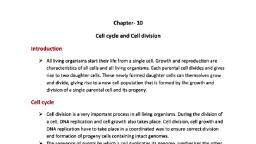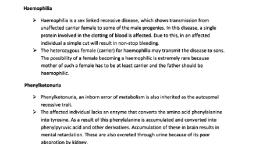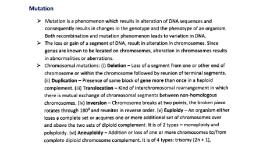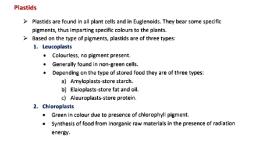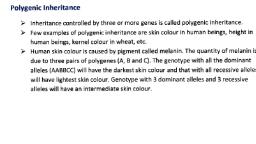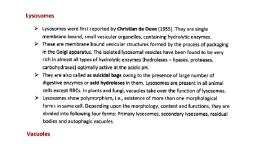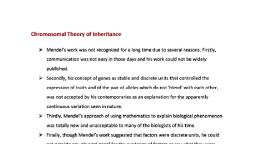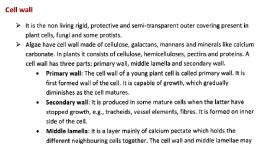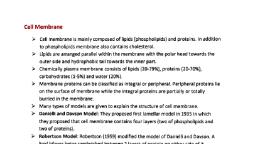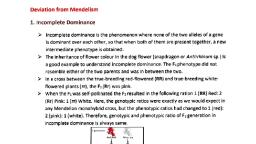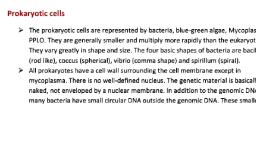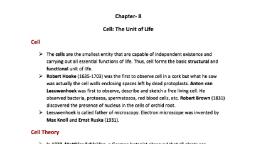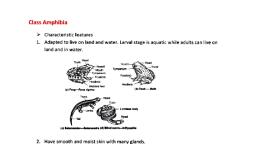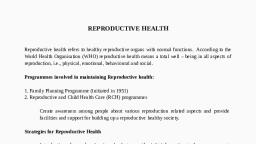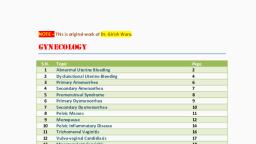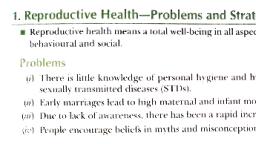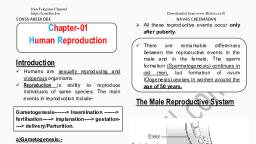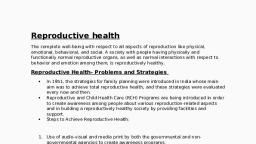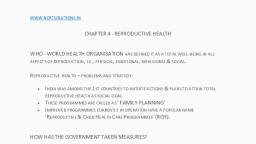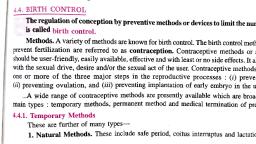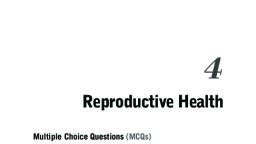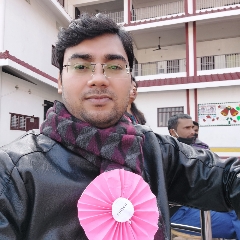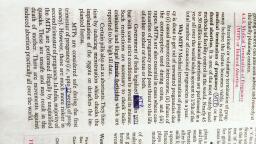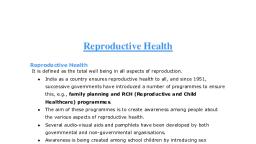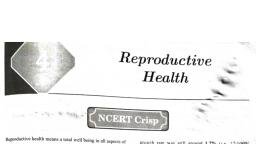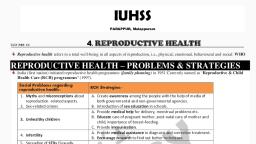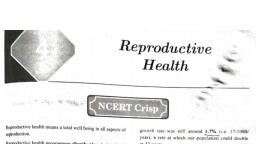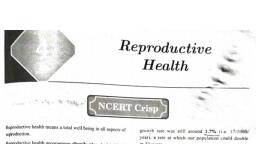Page 1 :
Birth control or Contraception, The regulation of conception by preventive methods or devices, to limit the number of offspring is called birth control or, contraception. They basically prevent fertilization., An ideal contraceptive should be user-friendly, easily available,, effective and reversible with no or least side-effects. It also, , should not interfere with the sexual drive, desire and the sexual, act of the user., Birth control can be achieved by preventing: (i) transport of, sperm to ovum, (i) ovulation, (ii) implantation of early embryo, in the uterus., , emporary methods of birth control, >These methods are commonly used to postpone or to space, births., , These methods prevent conception onlyfor a limited period., Their regular use is necessary for continued avoidance of, pregnancy. They include:, , 1. Natural methods, , These methods work on the principle of avoiding the, meeting ovum and sperms. They are of following three, types:, , (i) Periodic abstinence or Rhythm method:, , The couples avoid or abstain from coitus from day 10 to, 17 of the menstrual cycle because ovulations are high, during this period. This period is called fertile period as, chances of fertilization, , are, , very, , high.
Page 2 :
.The effectiveness of this method is limited because only a, few women have regular menstrual cycles and the actual, time of ovulation cannot be predicted., (ii) Coitus interruptus or Withdrawal method:, I t involves withdrawal of penis from vagina by the male, just before ejaculation, so that semen is not ejaculated, into the vagina and thus, fertilization is prevented., (ii) Lactational amenorrhea method:, , I t is based on the fact that ovulation and the menstrual, cycle do not occur during the period of intense lactation, following child birth., , 2. Barrier methods, , I n barrier methods,ovum and sperm are prevented from, physically meeting with the help of some barriers. Following, barrier methods are available for both males and females:, , Condoms are barriers made of thin rubber or latex sheath, that are used to cover the penis in the male or vagina and, cervix in the female, just before coitus so that the ejaculated, semen would not enter into the female reproductive tract., This can prevent conception. Nirodh is a popular brand of, condom for the male. Female condoms are called femidoms., , Use of condoms is increasing due to its additional benefit of, protecting the user from contracting STis and AlIDS., Diaphragms, cervical caps and vaults are also barriers made, of rubber that are inserted into the female reproductive, tract to cover the cervix during coitus. They prevent, conception by blocking the entry of sperms through the, cervix. They are reusable.
Page 3 :
3. Chemical methods, , Spermicidal creams, jellies and foams are usually used along, with the barriers to increase their contraceptive efficiency., These are inserted in the vagina before intercourse to, prevent sperms from entering the uterus. These contain, spermicides such as lactic acid, citric acid, boric acid, zinc, sulphate and potassium permanganate., , Sponge is a foam suppository or tablets containing, nonoxynol as spermicides., , 4. Intrauterine Contraceptive Devices (IUCDs), JUCDs are plastic or metal objects inserted by doctors in the, uterus or vagina., , Use if IUCDs is an effective and popular method., IUCDs are ideal contraceptives for the females who want to, delay pregnancy or space children., I t is one ofthe most widely accepted methods of, contraception in India. These devices are available as:, , (i) Non-medicated IUCDs:, I t consists of a thin plastic wire bent in a series of S-, , shapes., I t needs to be straightened when it is being inserted into, the uterus but resumes its shape once inside it, e.g,, , Lippes' loop., (i) Hormone releasing IUCDs:, These IUCDs make the uterus unsuitable for, implantation and the cervix hostile to the sperms, e.g.,, , LNG-20, progestasert.
Page 4 :
(ii) Copper releasing IUCDs:, , Cu ions released by these lUCDs suppress sperm motility, and fertilization capacity of the sperms, e.g., CuT, Cu7,, and Multiload 375., , There are few disadvantages ofIUCDs:, (i) IUCDs are expelled without the knowledge of the wearer, in about 10 to 15% of the women and they face the risk of, , becoming pregnant., (ii) Risk of perforation of uterus and also risk of infection is, there., ii) They can cause excessive menstrual bleeding and pain., , 5. Oral contraceptive pills, , This is another contraceptive method used by the females., I t includes oral administration of small doses of either, progestogens or progestogens-estrogen combinations. They, are used in the form of tablets and hence are popularly, , called the pills., , Oral pills are of two types:, , (i) Combined pills:, .They contain synthetic progesterone and estrogen to, check ovulation, e.g., Mala D and Mala N., , (ii) Mini pills:, , .Theycontain progestin only, e.g, Saheli., , Pills have to be taken daily for a period of21 days starting, preferably within the first five days of menstrual cycle. After, a gap of 7 days it has to be repeated in the same pattern till, the female desires to prevent conception., , They inhibit ovulation and implantation as well as alterthe, quality of cervical mucus to prevent entry of sperms. Pills are
Page 5 :
very effective with lesser side effects and are well accepted, , by the females., , Oral contraceptive pills increase the risk of intravascular, clotting. Therefore, they are not recommended for women, with a history of disorders of blood clotting, cerebral blood, vessel damage, hypertension, heart diseases, etc. they can, also cause acne, weight gain, depression, hypertension,, leucorrhea, reduction in menstrual flow, mastalgia, nausea,, vomiting, melasma, etc., , I n 1991,Central Drug Research Institute (CDRI), Lucknow,, introduced world's first non-steroidal oral contraceptive pills, under the brand name "Saheli'. It contains 'centchroman' which, inhibits implantation., , 6. Hormone injections and subcutaneous implants, Progestogens alone or in combination with estrogen can also, be used by females as injections or implants under the skin., They act similarly to oral contraceptives by blocking ovulation, and thickening the cervical mucus to prevent sperm transport., , Administration of progestogens or progestogens-estrogen, combinations or lUCDs within 72hours of coitus have been, found to be effective as emergency contraceptives as they, could be used to avoid possible pregnancy due to rape or, casual unprotected intercourse., , Hormone injections are convenient and highly effective with, no serious side effects. There is occasional heavy menstrual, , bleeding., Subcutaneous implants are very safe, convenient, effective and, , long-lasting. The new contraceptive, once implanted, is, effective for five years. Six matchstick-sized capsules containing, steroid are inserted under the skin of the inner arm above the
Page 6 :
elbow. The capsules slowly release the synthetic progesterone, for about 5 years., , Permanent methods of birth control, , Surgical methods are also called sterilisation method., Surgical intervention blocks gamete transport and thereby, prevents conception. Sterilisation procedure in the male is, , called vasectomy and that in the female is called tubectomy., , I n vasectomy, a small part ofthe vas deferens is removed or, tied up through a small incision on the scrotum., , In tubectomy, a small part of the Fallopian tube is removed or, tied up through a small incision in the abdomen or through, , vagina.
Page 7 :
Medical Termination of Pregnancy (MTP), Intentional or voluntary termination of pregnancy before full, , term is called medical termination of pregnancy (MTP)or, induced abortion., Government of India legalised MTP in 1971 with some strict, conditions to avoid its misuse., MTPs are used to get rid of unwanted pregnancies either due, to casual unprotected intercourse or failure of the, contraceptive used during coitus or rapes. MTPs are also, essential in certain cases where continuation of the pregnancy, , could be harmful either to the mother or to the fetus or both., MTPs are considered relatively safe during the first trimester,, i.e., upto 12 weeks of pregnancy. Second trimester abortions, are much more riskier., , Another dangerous trend is the misuse of amniocentesis to, determine the sex of the unborn child. If the fetus is found to, be female, it is followed by MTP. Such practices should be, avoided because these are dangerous both for the young, mother and the fetus. There should be effective counseling to, avoid unprotected coitus and the risk factors involved in illegal, , abortions so as to stop MTP., , Sexually Transmitted Infections (STIs), Diseases or infections which are transmitted through sexual, intercourse are collectively called sexually transmitted, , infections (STIs) or venereal diseases (VDs) or reproductive, , ract infections (RTI).
Page 8 :
STis caused by Bacteria, 1. Syphilis, , Pathogen, , Treponema pallidum, , Transmission Through sexual contact and from mother to, child, Incubation period-10-90 days, Symptoms-The first stage is painless ulcer or chancre on the, genitals and swelling of local lymph glands. In the second stage,, chancre is healed and there are skin lesions, rashes, hair loss,, swollen joints and flu-like illness occasionally. In the tertiary, stage, chronic ulcers appear on palate, nose and lower leg., , There can be paralysis, heart trouble and aortic impairment. In, the latent syphilis, there is no evidence of disease., , Diagnosis-(a) Antibody detection, e.g., VDRL, (b) ELISA test, , Treatment- Antibiotics, e.g., penicillin, tetracycline., 2. Gonorrhoea, , Pathogen -Neisseria gonorrhoeae, Transmission Sexual contact, common toilets and under, clothes, , Incubation period-2-5 days, Symptoms - The bacterium lives in genital tubes, produces pus, , containing discharge, pain around genitalia and burning, sensation, , during urination. It may lead to arthritis and eye, , infection in children of gonorrhoea afflicted mothers., , Diagnosis-Gram staining of discharge and culture, , Treatment- Antibiotics, e.g., penicilin, ampicilin.
Page 9 :
STIs caused by Viruses, 3. AIDS, , Pathogens- Human Immunodeficiency virus (HIV), Transmission-Through semen, blood,infected mother's milk, Incubation period-6 months-10 years, , Symptoms-Fever, lethargy, pharyngitis, weightloss, nausea,, headache, rashes, etc. HIV attacks helper T-lymphocytes, the, patient gets immune deficiency., Diagnosis - ELISA, PCR, Western blotting., , Treatment, , Anti-retroviral drugs such as zidovudine and, , didanosine prolong the life of AIDS patient., , 4. Hepatitis B, , Pathogen- Hepatitis Bvirus (HBV), Transmission Blood transfusion, sexual contact, saliva, tears,, intravenous drug abuse, tattooing, ear and nose piercing,, sharing of razors, etc., , Incubation period-30-80 days, Symptoms-Fatigue, jaundice, persistent low grade fever, rash, and abdominal pain. It can cause cirrhosis and possibly liver, cancer., Diagnosis - Hepatitis B surface antigen (HBSAg), ELISA., , Treatment-Not completely curable, , 5. Genital herpes, Pathogen- Herpes simplex virus, Transmission Genital secretions(through contact with, genitalia)
Page 10 :
Symptoms- Vesiculopustular lesions followed by clusters of, painful erythematous ulcers over external genitalia and peri, anal regions, vaginal and urethral discharge and swelling of, , lymph nodes, Diagnosis- Antigen detection, PCR, nucleic acid hybridization, , Treatment- Not completely curable, , 6. Genital warts, Pathogen- Human papilloma virus, , Transmission Sexual intercourse, Symptoms, Benign, hard outgrowths with horny surface, (warts) over the skin and mucosal surface of external genitalia, and peri-anal area., Diagnosis -Antibody detection, culture and DNA hybridization, Treatment - Cryosurgery is used in removal of warts., , Podophyllum preparations and podofilox are useful in, , treatment., STIs caused by Chlamydia, 7. Chlamydiasis, Pathogen - Chlamydia trachomatis, , Transmission Sexual contact, , Incubation period-1 week, Symptoms- Urethritis, epididymitis, mucopurulent, cervicitis,, inflammation of Fallopian tubes, proctitis (rectal pain with, mucus and occasional bleeding), etc., Diagnosis-, , Gram staining of discharge, antigen detection,, , nucleic acid hybridization, Treatment - Antibiotics like tetracycline, erythromycin and, , rifampicin
Page 11 :
STIs caused by Protozoans, 8. Trichomoniasis, , Pathogen - Trichomanas vaginalis, , Transmission Sexual intercourse, Symptoms- In females, it causes vaginitis with foul smelling,, yellow vaginal discharge and burning sensation. In males, it, , causes Urethritis, epididymitis and prostatitis resulting in pain, and burning sensations., , Diagnosis- Microscopic examination, culture and, immunofluorescent antibody and staining, , Treatment, , - Metronidazole, , 9. Amoebiasis, Pathogen - Entamoeba histolytica, , Transmission -Contaminated food and water, sometimes, sexual contact, The patient passes blood along with faeces and, , Symptoms, , feels pain in abdomen., Treatment - Antiamoebic tablets, , Though all persons are vulnerable to STDs, their incidences are, reported to be very high among persons in the age group of 15-, , 24 years. For prevention, following simple principles should be, followed:, , i) Avoid sex with unknown partners/multiple partners., i) Always use condoms during coitus., ii) In case of doubt, go to a qualified doctor for early detection, , and get complete treatment if diagnosed with disease.
Page 12 :
Infertility, Inability to conceive or produce children in-spite of, unprotected sexual cohabitation is called infertility., I t is caused by various reasons which can be grouped under, physical, congenital, immunological or even psychological, disorders., The couples could be assisted to have children through certain, special techniques commonly known as assisted reproductive, , technologles (ART)., Assisted reproductive technologies (ART) include a number of, special techniques which assist infertile couples to have, children. Some important techniques are:, , i) Test tube baby programme:, , I n this programme, ova from wife/donorfemale and, sperms from husband/donor male are collected and are, induced to form zygote under simulated conditions in the, , laboratory., This method involves in vitro fertilization i.e., fertilization, of male and female gamete outside the body in almost, similar conditions as that in the body followed by embryo, , transfer (ET), Embryo upto 8 blastomeres are transferred into the, , Fallopian tube (ZIFT- Zygote Intra Fallopian Transfer) to, complete its further development., , If the embryo is with more than 8 blastomeres, then it is, transferred into uterus (UT- Intra Uterine Transfer) to, complete its further development.
Page 13 :
A developing embryo can be inserted in the uterus of, another female., , The first test tube baby Louise Joy Brown, was born to Lesley, and Gilbert Brown in 1978 with the help of Dr.Patrick Steptoe, and Dr. Robert Edwards. Dr. Robert Edwards got 2010 Nobel, , Prize for developing a technique for production of test tube, , baby., A, , woman who substitutes or takes the place of the real mother, to nurse the embryo is called surrogate mother., , ii) Gamete intra fallopian transfer (GIFT):, This method is used in females who cannot produce ova, but can provide suitable environment for fertilization and, further development of embryo in the oviducts., I n this technique, both sperm and ovum are introduced, into the fallopian tube of females incapable of producing, ovum for fertilization., , ii) Intra cytoplasmic sperm injection (ICSI), I n this technique, sperm is directly injected into the, cytoplasm of ovum to form an embryo in the laboratory., , The embryo is later transferred by ZFT or IUT in woman., , iv) Artificial insemination (Al) technique:, This technique is used when the husband is either unable, to inseminate the female or has very low sperm countsin, the ejaculation., , I n this technique, the semen collected either from the, husband or a healthy donor is artificially introduced into, , the vagina or into the uterus of the female.
Page 14 :
Detection of fetal disorders, .Transabdominal aspiration offluid from the amniotic sac, of the fetus is called amniocentesis. It is s fetal sex, determination and disorder test based on the, chromosomal pattern in the amniotic fluid surrounding, , the developing embryo., .In Chorionic Villi Sampling (CVS) technique, the physician, inserts a narrow, flexible tube through the mother's, vagina and cervix into the uterus and withdraws a small, amount of fetal tissue from the placenta. Cells of, chorionic villi are used for karyotyping., , One ofthe widely used non-invasive technique to, determine fetal condition is ultrasound imaging., , Fetoscopy is another technique in which a needle thin, tube containing a viewing scope is inserted into the, uterus, giving the physician a direct view of the fetus.


